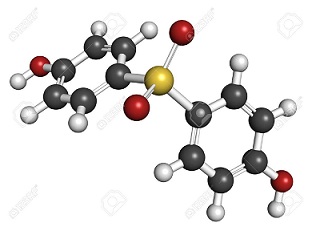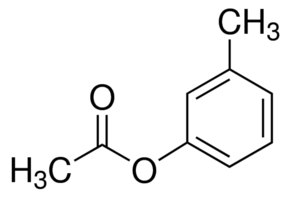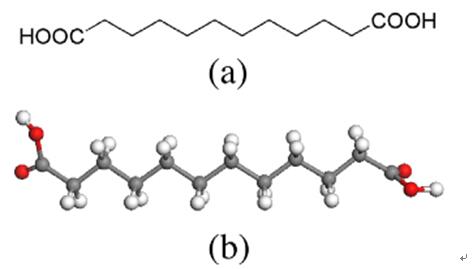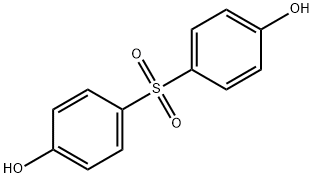Uses of Bisphenol S
Oct 23,2019
Chemical properties
Bisphenol S is white needle crystals with the melting point of T 240-241 ° C. Easily soluble in aliphatic hydrocarbons, soluble in alcohols and ethers, slightly soluble in aromatic hydrocarbons, insoluble in water. Bisphenol S consists of two hydroxyphenyl groups connected by a sulfonyl group with strong electron absorption, so it has stronger acidity than that of other phenols.
Uses
Bisphenol S is mainly used as a fixing agent. In addition, it can be used as a plating solution additive, a leather tanning agent, a dispersant for high-temperature dyeing, Phenol formaldehyde hardener and flame retardant(resins) and the like. It is also an intermediate for pesticides, dyes and additives. As a substitute for bisphenol A, it can be used as a raw material for polycarbonate, epoxy resin, polyester, phenolic resin, and a raw material of polysulfone and polyethersulfone. The product is also used in the manufacture of color photographic materials, contrast aids, thermosensitive recording materials (colour developing reagent), daily surfactants, and high-efficiency deodorants. Fixing agent A ( trade name outside China: Cibatex PA) can be obtained by using bisphenol S as a raw material.
Bisphenol S can be used as a monomer in the synthesis of polysulfone resin, and can also be directly used in coatings, leather modifiers, dye intermediates and metal plating brighteners etc.
Bisphenol S has excellent properties of heat resistance, light resistance and oxidation resistance, and is a raw material for the synthesis of polycarbonate, epoxy resin and polysulfone and polyether oxime resin. It is also used to synthesize dye fixing agent and leather tanning agent, and can also be used as intermediates for metal plating additives, dyes, medicines, pesticides and additives.
Reference
R. L. Melnick, K. A. Thayer, and J. R. Bucher, Conflicting views on chemical carcinogenesis arising from the design and evaluation of rodent carcinogenicity studies. Environ. Health Perspect. 116(1), 130–135 (2008).
90. I. Berenblum, The mechanism of carcinogenesis: a study of the significance of cocarcinogenic action and related phenomena. Cancer Res. 1, 807–814 (1941).
91. P. N. Magee and J. M. Barnes, The production of malignant primary hepatic tumors in the rat by feeding dimethylnitrosamine. Br. J. Cancer 10, 114–122 (1956).
- Related articles
- Related Qustion
- Exploring the Properties, Applications, and Safety of Bis(4-hydroxyphenyl) Sulfone Jan 4, 2024
Bis(4-hydroxyphenyl) sulfone is a white crystalline compound used in various industries. It is used as an intermediate and electroplating solvent and hazardous with reproductive toxicity.
- Bis(4-hydroxyphenyl) Sulfone: unveiling the toxic effects and reproductive disruptions of a common compound Jul 12, 2023
Recent scientific research has shed light on the toxic effects and reproductive disruptions caused by a commonly used compound, bis(4-hydroxyphenyl) sulfone.
P-cresyl acetate is suitable for narcissus, daffodil and large flower jasmine. It is also suitable for use in white orchid, lilac, lily of the valley, hyacinth, fragrant roy, and ylang-ylang type.....
Oct 23,2019Food AdditivesDodecanedioic acid (DDDA, C12H22O4, CAS registry No. 693-23-2) has achieved industrial importance in the manufacturing of polyamides, polyesters, lubricating oils and plastic.....
Oct 23,2019Organic reagentsBis(4-hydroxyphenyl) Sulfone
80-09-1You may like
Bis(4-hydroxyphenyl) Sulfone manufacturers
- Bis(4-hydroxyphenyl) Sulfone
-

- $0.00 / 1KG
- 2025-12-12
- CAS:80-09-1
- Min. Order: 1KG
- Purity: 98%min
- Supply Ability: 30tons/month
- 4,4'-Sulfonyldiphenol
-

- $0.00 / 25Kg/Bag
- 2025-12-12
- CAS:80-09-1
- Min. Order: 1KG
- Purity: 99%
- Supply Ability: 5000mt/year
- 4,4'-Sulfonyldiphenol
-
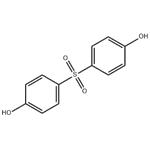
- 2025-12-12
- CAS:80-09-1
- Min. Order:
- Purity: 0.99
- Supply Ability:




